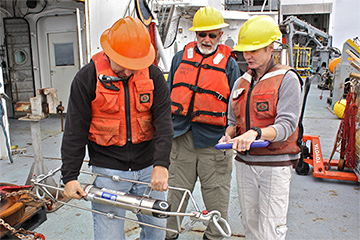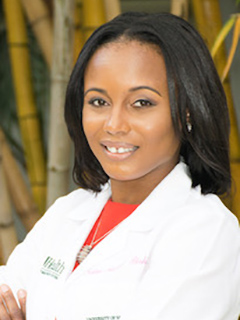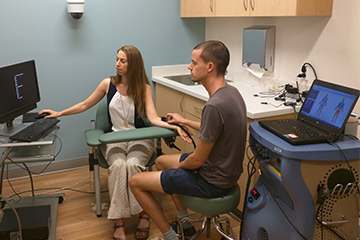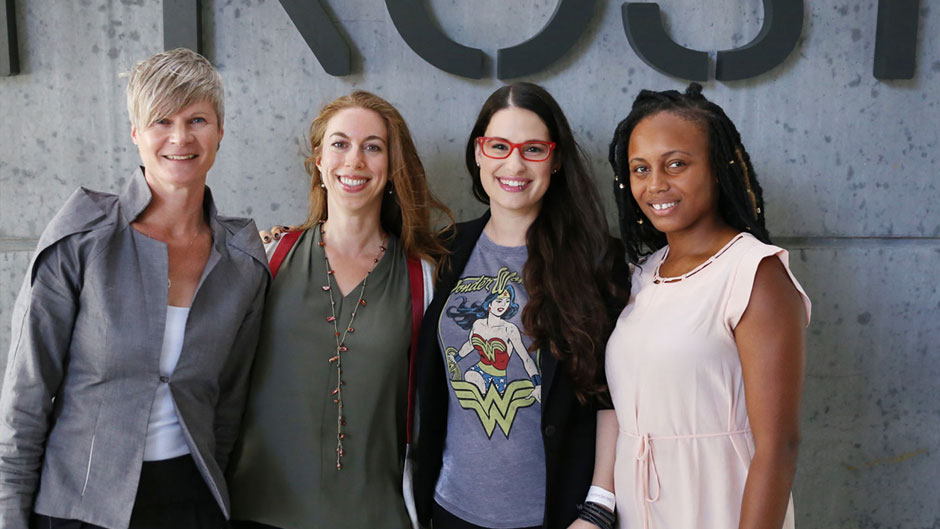With a primary weapon being her lasso of truth, Wonder Woman carries plenty of parallels to what scientists do—search for evidence and truth to help understand the world around them.
How many thousands of future scientists were inspired by Hollywood films Jurassic Park, Star Wars, Twister or Contact? The latest blockbuster superhero movie is no less inspirational.
On June 21, the new Phillip and Patricia Frost Museum of Science kicked off the first installment of the lecture series LIVE@Frost Science by featuring some of Miami’s very own wonder women of science from the University of Miami—oceanographer Lisa Beal, biomedical researcher Kilan Ashad-Bishop and cultural neuroscientist Elizabeth Losin.
The event, called Hollywood Science & the Wonder Women of Miami, featured a discussion on how the strong female persona in the superhero movie is continuing to be a role model for girls and young women.
“Female scientists are themselves like superheroes,” said moderator Cara Santa Maria, a science communicator and host of the podcast Talk Nerdy and co-host of The Skeptics’ Guide to the Universe.
Though there’s been some progress for women in science, she added, these superheroes still have to knock down barriers and shed layers of discrimination in subtle or blatant ways.
“I’ve been going to sea for 20 years and I’ve been on ships where I’ve been the only woman. It hasn’t been easy,” said Beal, associate dean of research and professor of ocean sciences at UM’s Rosenstiel School of Marine and Atmospheric Science. “Considering Wonder Woman’s armor, I was thinking, you have to have some of that armor to get on a ship as a woman, and be in charge.”
 |
| Lisa Beal, right, associate dean of research and professor of ocean sciences at the UM Rosenstiel School of Marine and Atmospheric Science, on a research expedition in the Indian Ocean studying the Agulhas current. |
Beal, who’s been the chief scientist on research vessels a half dozen times or more, focuses her research on ocean currents and the ocean’s role in climate, specifically climate change.
“It’s really one big ocean and I’m looking at how the different parts of the ocean are connected through currents,” said Beal. “The ocean is not homogenous at all. It’s kind of like a layer cake, and doesn’t look the same either horizontally or vertically.”
The ocean, Beal explained, has taken up 90 percent of the excess energy that society has dumped into the climate system through carbon dioxide emissions. “It’s effectively acting like a buffer for us right now. The climate would be changing even faster if it wasn’t for the ocean.”
Beal studies currents like the Gulf Stream in the Atlantic and the Agulhas in the Indian Ocean off the coast of South Africa, the latter holding a special place in her heart in part because it produces some of the fiercest waters in the world. These expeditions are not for the weak-willed and, historically, have included mostly men.
But over the years, more and more women oceanographers are setting out to sea. Beal and her team helped put together a short film, Women in Oceanography, to celebrate the unprecedented number of women who joined an expedition to study the Agulhas in 2013.
In studying heterogeneous parts of the ocean, Beal is working to help answer when, where, and how the energy absorbed by the ocean will be put back into the atmosphere and how this would affect the climate in those regions.
Understanding heterogeneity and diversity is important not just for oceans and climate change resilience, but for societal resilience as well.
 |
| Kilan Ashad-Bishop, biomedical researcher and Ph.D. candidate at the UM Miller School of Medicine. |
Ashad-Bishop, a Ph.D. candidate in biological and biomedical sciences at UM’s Miller School of Medicine, and Losin, director of the Social and Cultural Neuroscience Lab and assistant professor of psychology at the College of Arts and Sciences, both study how disparities and social demographics relate to health.
When Ashad-Bishop, who is African-American, was looking to specialize her research during her graduate program, she learned that young women and African-American women are disproportionately affected by breast cancer.
“Even though white women are more likely to develop breast cancer, black women are more likely to die from it. Obviously, that hit home,” said Ashad-Bishop. “That disparity, and trying to figure out a way to help with the problem, interested me.”
In her cancer research, which is overseen by her mentor, Karoline Briegel, associate professor and researcher at the Sylvester Comprehensive Cancer Center, Ashad-Bishop works to try to “flip a switch so that mice can express a protein that can be treated and ultimately cured—turning the breast cancer from a more aggressive type to a less aggressive and more treatable type,” she said. “The idea of making a problem into something more solvable and treatable is very attractive and what really excites me about my work.”
Though she “belongs to a double minority, and a rarity, in most of the rooms that she frequents,” Ashad-Bishop said she’s never felt isolated and has had strong female mentors and role models, including her mother and graduate advisor.
Similar to disparities in breast cancer, Losin said, there are disparities in the pain experience. For example, she said, women tend to report more pain than men, and members of certain minority groups tend to report more pain than members of the majority. Losin works to understand the psychological and brain processes that are underlining our everyday social and cultural interactions, which are affected by experiences throughout our lifetimes.
Under the broad umbrella of cultural neuroscience, Losin is currently trying to determine “how social and cultural factors adjust the volume on people’s pain experiences,” she said, “because part of what we think is contributing to those disparities are social and cultural processes that range from experiences people have had throughout their lives, like discrimination, to experiences that they’re having acutely in the doctor’s office.”
 |
| Elizabeth Losin, left, cultural neuroscientist at the UM College of Arts and Sciences, poses as a research participant receiving pain induction from graduate student Steven Anderson, similar to what her team does in their doctor-patient simulation studies. |
As a neuroscientist, Losin uses various tools, ranging from asking a person about their pain experience and physiological tests, to simulating a doctor’s visit and using functional magnetic resonance imaging (fMRI) scans to “really peak under the hood and look at what the brain and body can tell us about differences in pain experiences.”
Studying disparities is certainly important for understanding struggles that women in science still grapple with.
“We don’t see many women leaders or women scientists and so we assume that women are not very good at that,” said Beal. “But learning where some prejudices come from, that it’s cultural and not personal, that is a very powerful thing.”
The more these disparities are acknowledged, the women said, the more we’re empowered to overturn them.
“I haven’t seen many people that look like me in my field, but there’s beauty in the struggle,” said Ashad-Bishop. “Seeing women command the room, or people of color command the room, has felt really good. It makes me feel like I can get there.”
Having female role models is also very important.
“My graduate school mentor had a daughter and I was able to see how she navigated that and I found that really inspirational,” said Losin. “The issue of having kids is there. In academia, it’s hard to make that work. The system is really not designed for there to be a good time to have kids and not have it derail your career.”
Beal said it’s important to come together, to be strong and compassionate about the obstacles that all women face.
“Learning to have each other’s back as women,” said Beal.
After all, it’s what Wonder Woman would do.

